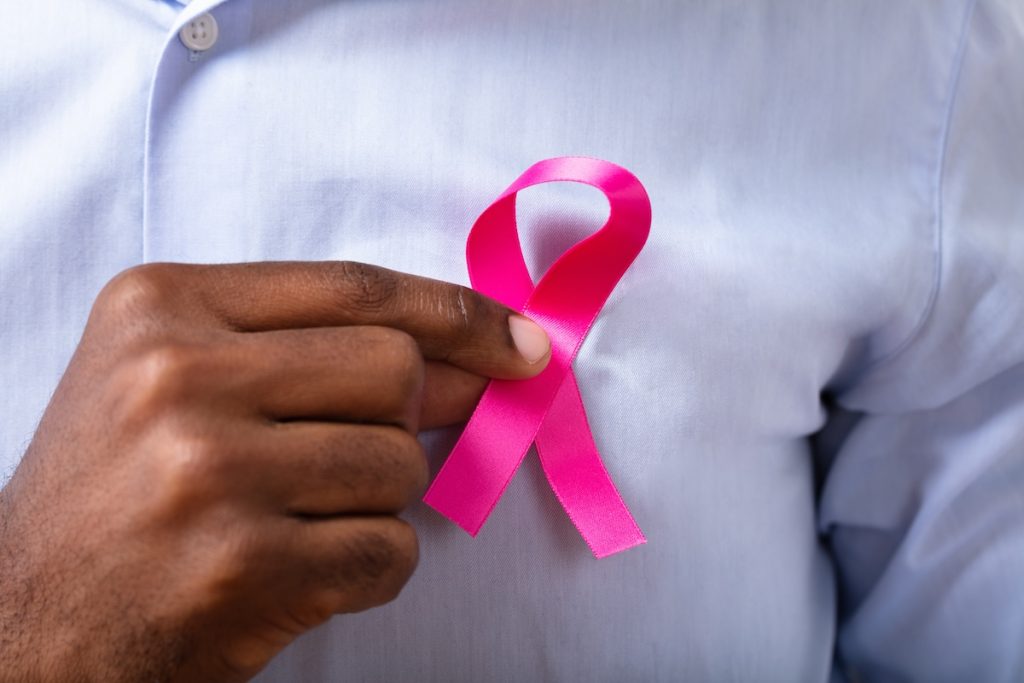In 2024, it is estimated that 2,800 men will be diagnosed with breast cancer—becoming terminal for just under 20%. Most are diagnosed between 60 and 70 years of age. It is 70 times less common in Black men than in Black women but 100 times less among white men than white women, according to the National Breast Cancer Foundation, Inc.
What are the Symptoms of Male Breast Cancer?
Understanding the signs and symptoms can lead to early diagnoses and treatment and save lives. The most common is a hard lump underneath the nipple and areola, often found by men in the shower, according to the National Breast Cancer Foundation, Inc.
Other symptoms include:
- A lump, with or without pain, that feels like a knot or hard pebble; look right under or around the nipple or in the armpit area
- Pain in the nipple or breast area
- Changes to the breast skin, including dimpling, puckering, or redness
- Change in the breast shape or size
- Nipple discharge
- A rash or a sore on the nipple or areola
- Nipple turning inward (inverted nipple)
Because many people overlook men when it comes to breast cancer, they aren’t screened or educated much on the topic.
Do Some Men Have Increased Risks of Breast Cancer?
Anyone with breast cells and breast tissue can develop breast cancer. This means that contrary to common myths, men are not exempt from breast cancer; they can get it, too. In fact, because of this misconception, more men lose their lives to breast cancer in comparison to women, according to the National Breast Cancer Foundation, Inc.
However, men who have a strong family history of breast, ovarian, or prostate cancers should talk to their healthcare providers, as they are more at risk for developing cancer. In addition to frequent manual exams, men can receive genetic testing to confirm if they carry the BRCA gene mutation—the gene responsible for various cancers, including breast. Men with BRCA mutations are at up to 5 times higher risk for breast cancer compared to men who do not have the mutation. To read a complete list of risk factors, check out this list at the American Cancer Society.
What is the Screening Process for Men?
Early detection is essential. Learning to perform manual self-exams is critical to detecting changes as early as possible. Your healthcare provider will choose the best diagnostic testing if symptoms are present. Image testing, such as mammograms and a low-dose X-ray exam of the breast tissue, is used for further examination and diagnosis, per the American Cancer Society.
What are the Best Treatment Options for Male Breast Cancer Patients?
Treating breast cancer is similar for males and females. According to the NIH, early stages operable male breast cancer treatment options are similar to women.
They include:
- Surgery (with or without radiation)
- Adjuvant therapy (chemotherapy, endocrine therapy, Human epidural growth factor receptor (HER2)-directed therapy.
If patients have cases at stages that are locally advanced or metastatic male breast cancer, they may want to look at the clinical trial research that is underway.

